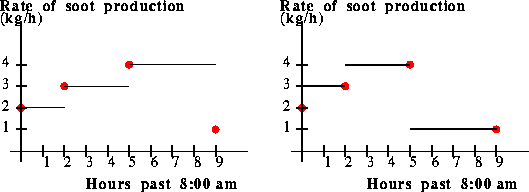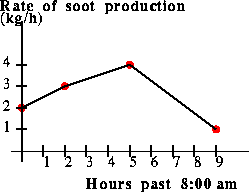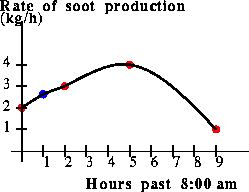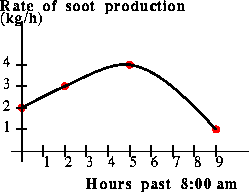A little notation will be useful. Suppose that you have n pieces of data. The data was recorded at times t0, t1, t2, ..., tn and the corresponding measurements were P0, P1, P2, ..., Pn.
We have included the following models of experimental data:
The Numerical Integration Lab discusses these models and also a model that uses Fourier polynomials (trigonometric functions). The lab also addresses the issue of error and accuracy: how can we be confident that our numerical integration is a good approximation to the integral of the underlying (unknown) function that gave rise to the experimental data?We need to make an assumption about how to define the model for time less than t0 or time greater than t1. We will make the simplest assumption: the model is always zero for times prior to t0 or for times greater than tn.
The extension of the model outside of the range of data is the same as above.

The model is defined similarly for other values of t in the interval for which we have data. As above, the model is assumed to be zero outside of the range of data.

If we have an odd number of data points, then we may split up the data points into groups of three: we group together data points 1-3, 3-5, 5-7, and so on. For each triple, we may fit a quadratic polynomial through the data points, and then sum up the areas under each parabola in order to estimate the integral of the experimental data. In the case that the independent variables of the experimental data are distributed uniformly, this method reduces to the well-known Simpson's Rule for numerical quadrature.
If the number of data points is even, then Simpson's rule cannot be directly applied. What we have implemented here is the following scheme: we fit a parabola to the first three data points, and use this to interpolate a new data point whose abscissa lies between t0 and t1. We then add this point to the data set, creating an odd number of data points, and then we proceed as above.
The extension of the model outside of the range of data is the same as the other models.

The extension of the model outside of the range of data is the same as the other models, but the fact that we are fitting a cubic polynomial to the data set gives us additional freedom. In this lab, we have chosen the cubic polynomial so that the slope of the model at t0 is the slope of the line segment from (t0,P0) to (t1,P1). Similarly, the slope of the model at tn is set to be the slope of the line segment from (t_(n-1),P_(n-1)) to (tn,Pn).

Last modified: Fri Jan 31 14:25:46 1997